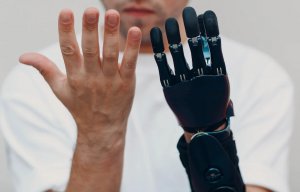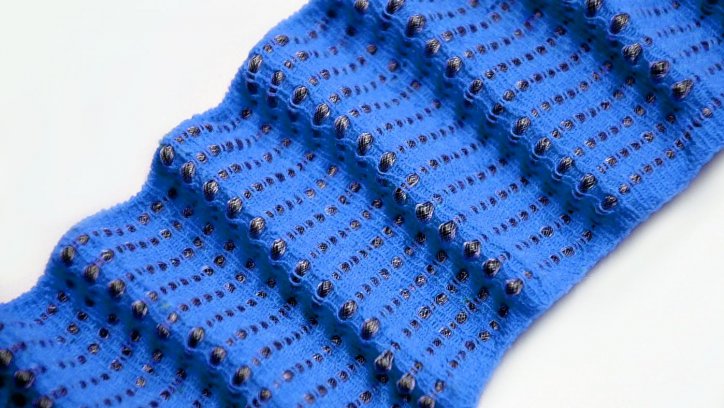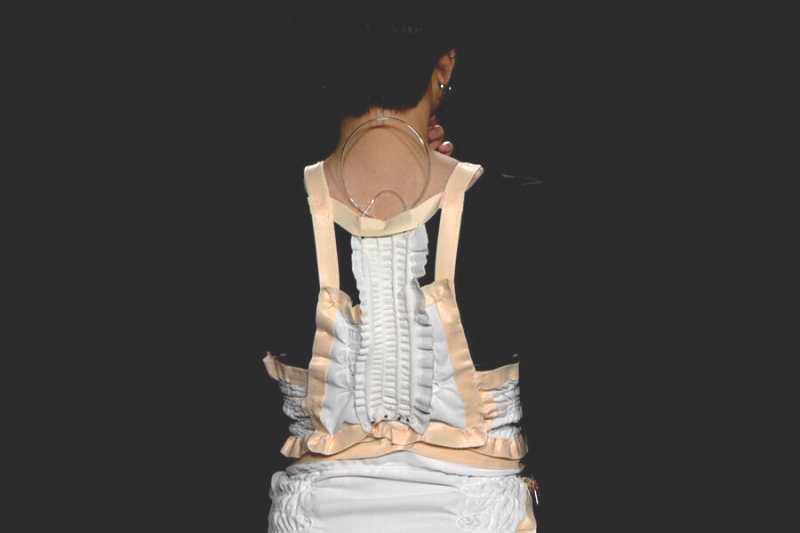
Revolutionising human touch
Geometry of the yarns controlled by pressurising and releasing a medium such as compressed air or water into the channels, allowing them to act as artificial muscles.

16th November 2021
Innovation in Textiles
|
Cambridge, MA, USA
OmniFabric, developed by researchers at MIT in the USA and Uppsala University and the KTH Royal Institute of Technology in Sweden, is a system constructed from composite yarns that sense how much they are being stretched or compressed, providing immediate tactile feedback in the form of pressure, lateral stretch, or vibration.
Such fabrics, the team suggests, could be used in garments that help train singers or athletes to better control their breathing, or help patients recovering from disease or surgery to recover their breathing patterns.
The yarns have a fluid channel in their centre, which can be activated by a fluidic system. This system controls the geometry of the yarns by pressurizing and releasing a medium such as compressed air or water into the channel, allowing the yarn to act as an artificial muscle. The yarn system also contains stretchable sensors that can detect and measure the degree of stretching of the fibres. The resulting yarns are thin and flexible enough to be sewn, woven or knitted using standard commercial machines.
An extremely narrow size and the use of inexpensive raw materials make it relatively easy to structure the yarns into a variety of fabric forms. Their outer layer is based on a material similar to common polyester, and their fast response time and the strength and variety of the forces they can impart allow for a rapid feedback system for training or remote communications using haptics.
“The shortcomings of most existing artificial muscle fibres are that they are either thermally activated, which can cause overheating when used in contact with human skin, or they have low-power efficiency or arduous training processes,” said Ozgun Kilic Afsar, a research affiliate at MIT. “These systems often have slow response and recovery times, limiting their immediate use in applications that require rapid feedback.”
Vocal performance
As an initial test application the team made a type of undergarment that singers can wear to monitor and play back the movement of respiratory muscles, to later provide kinesthetic feedback through the same garment to encourage optimal posture and breathing patterns for the desired vocal performance.
Singing is particularly close to home for Afsar, whose mother is an opera singer and in the design and fabrication process of the garment, Afsar worked closely with a classically trained opera singer, Kelsey Cotton.

The fabric was made with different machine knitting techniques, including inlay and active spacer fabric for embedding actuating fibres.
The researchers had the singer perform while wearing the garment and recorded the movement data from the strain sensors woven into the garment. They then translated the sensor data to the corresponding tactile feedback.
“We were eventually able to achieve both the sensing and the modes of actuation that we wanted in the textile, to record and replay the complex movements that we could capture from an expert singer’s physiology and transpose it to a non-singer, a novice learner’s body.” Asfar said. “So, we are not just capturing this knowledge from an expert, but we are able to haptically transfer that to someone who is just learning.”
Though this initial testing is in the context of vocal pedagogy, the same approach could be used to help athletes learn how best to control their breathing in a given situation, based on monitoring accomplished athletes as they carry out various activities and stimulating the muscle groups that are in action. Eventually, the hope is that such garments could also be used to help patients regain healthy breathing patterns after major surgery or a respiratory disease such as Covid-19, or even as an alternative treatment for sleep apnea.
“The physiology of breathing is actually quite complex,” Afsar said. “We are not quite aware of which muscles we use and what the physiology of breathing consists of, so the garments have separate modules to monitor different muscle groups as the wearer breathes in and out, and can replay the individual motions to stimulate the activation of each muscle group.
Afsar plans to continue working on making the whole system, including its control electronics and compressed air supply, even more miniaturised to keep it as unobtrusive as possible, and to develop the manufacturing system to be able to produce longer filaments. In coming months, she plans to begin experiments in using the system for transferring skills from an expert to a novice singer, and later to explore different kinds of movement practices, including those of choreographers and dancers.

Business intelligence for the fibre, textiles and apparel industries: technologies, innovations, markets, investments, trade policy, sourcing, strategy...
Find out more